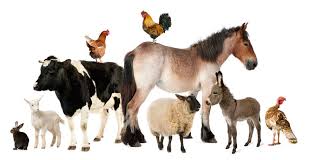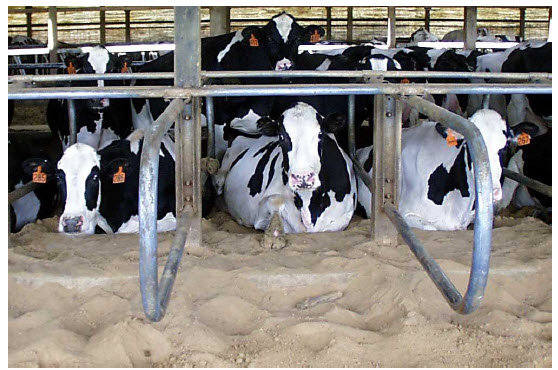Here’s hoping the hot and humid days of summer are coming to an end, soon!
The hot and humid days (and nights) of the past three months has certainly put the strain on the livestock farmer who has had to keep cows, sheep, chickens, pigs, goats, horses, and other livestock cool. Heat stress can occur anytime the temperature rises above 80 degrees or so. Goats are among the most heat tolerant livestock, as are, surprisingly, sheep – their wool actually protects them from extreme heat as well as cold. Pigs and cattle are among the least heat-tolerant livestock.
The signs of heat stress are more subtle with livestock than, say, dogs who pant heavily. Horses become visibly wet with sweat, but pigs, goats, sheep, and cows don’t have the type of sweat glands that help them cool off. Instead their snouts may be wet to the touch from sweat, and their mouths may hang open slightly. Chickens open their beaks and spread their wings when they are extremely hot. Classic signs of heatstroke in all livestock include lethargy, disorientation, trembling, and lack of appetite.
Providing clean drinking water is a prerequisite for keeping livestock, no matter the temperature, but is critical in extreme heat. Placing watering troughs in the shade, adding extra watering troughs and freezing plastic tubs of water overnight to create ice blocks for cooling watering troughs are all proactive ways to supply clean, cool water.
Space in the shade should be available to every animal on hot humid days, however, not all shade is created equal. A forested area for animals to lounge is much cooler than a barn with a hot tin roof and insufficient ventilation. If large shade trees are not available, the next best thing is an open-sided shade structure in your pasture.
And, the place your animal calls home can play a larger role in your animals’ temperature and comfort than you may think. First, make sure your animal has a place where they can get out of direct sunlight and into some shade. Not only does the sun quickly heat up the body temperature, but all animals can sunburn, which can then lead to flaky, dry and irritated skin. Second, pay attention to the air flow and temperature of your barn. Whether your facility at home has fans, misters or even a cooler, controlling airflow is so crucial to making animals comfortable through the summer. A good airflow in your facilities helps reduce temperatures, it creates a cool, dry environment that is less likely to attract pests or grow fungus and it will also help reduce odors. You can create optimal airflow in your barn through either ventilation, circulation or insulation.
Now, all that being said, did you every think about the huge electric bills livestock farmers might have received the past couple of months? Personally, I can tell you that ours is four (4) times the norm, thanks to the thirteen (13) fans that have run almost constantly in our barn – we even have a fan running in the screened-in back porch for the barn kittens that have had to reside there to prevent from becoming coyote bait. I can only shutter to think of the number on the dairy farmers’ electric bill, milking AND keeping their girls cool for good milk production has to be astronomical!


